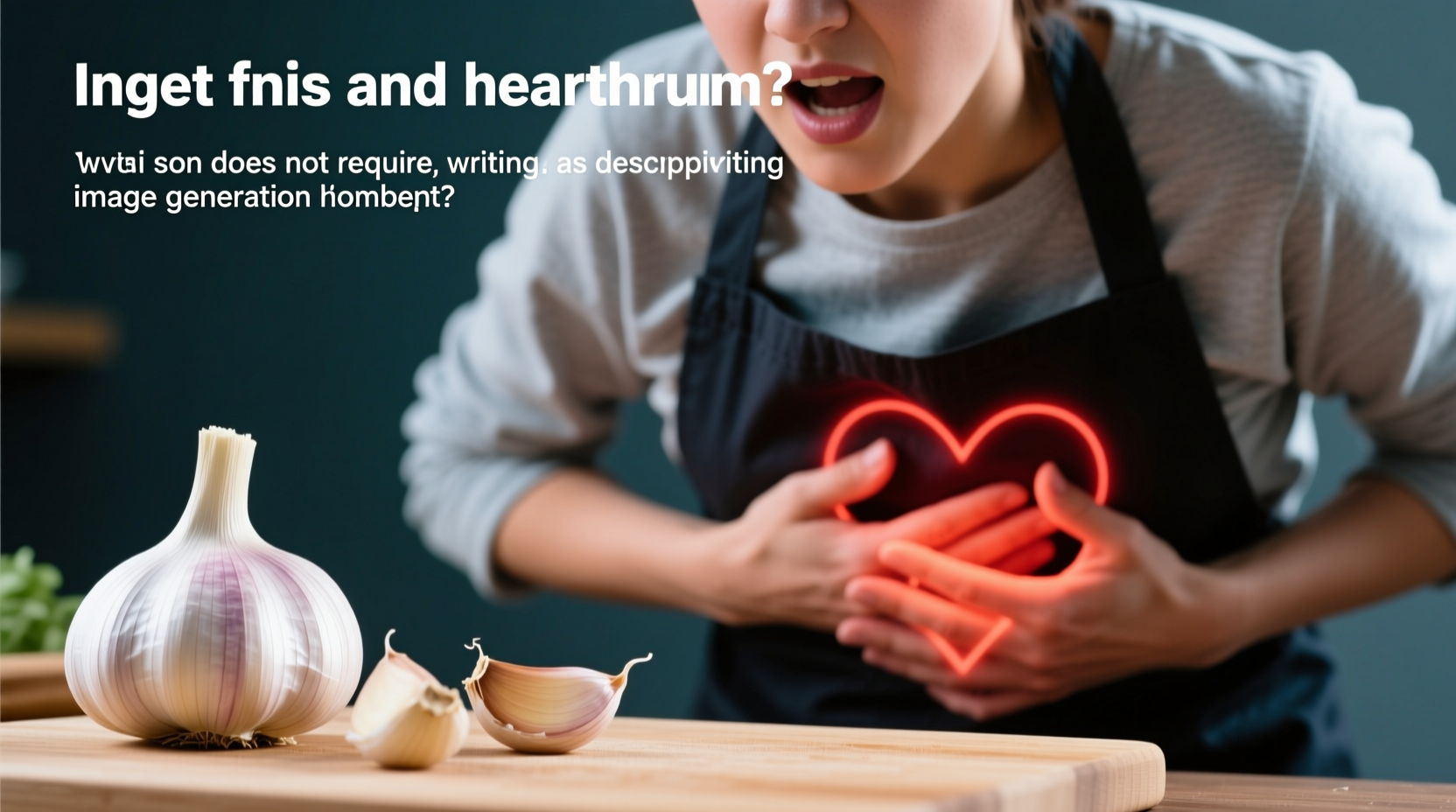For spice enthusiasts who experience discomfort after enjoying garlic-rich dishes, understanding this connection can transform your culinary experience. This guide delivers evidence-based insights on why garlic triggers heartburn for some people, who's most affected, and practical strategies to enjoy garlic without the burn.
Why Garlic Triggers Heartburn: The Science Explained
Garlic contains compounds that interact with your digestive system in specific ways. According to research published in the Journal of Neurogastroenterology and Motility, garlic's active component allicin can relax the lower esophageal sphincter (LES)—the valve that prevents stomach contents from flowing back into the esophagus. When this valve weakens, stomach acid can escape, causing that familiar burning sensation.
Additionally, garlic stimulates gastric acid secretion. While this aids digestion for most people, those with sensitive stomachs or pre-existing GERD may experience excessive acid production that leads to heartburn symptoms within 30-60 minutes of consumption.

Who's Most Affected by Garlic-Induced Heartburn?
Not everyone experiences heartburn from garlic. Research indicates certain factors increase your susceptibility:
- Individuals diagnosed with gastroesophageal reflux disease (GERD)
- People with hiatal hernias
- Those taking medications that relax the LES (like calcium channel blockers)
- Individuals with Helicobacter pylori infection
- People with existing digestive sensitivities
A 2023 survey by the American College of Gastroenterology found that 42% of GERD patients identified garlic as a frequent trigger, compared to only 15% of people without digestive conditions. This significant difference highlights how pre-existing conditions amplify garlic's heartburn potential.
Garlic Forms and Heartburn Risk Comparison
| Garlic Form | Heartburn Risk Level | Notes |
|---|---|---|
| Raw garlic | High | Most likely to trigger symptoms due to concentrated allicin |
| Fried garlic | Moderate-High | Fat content compounds the effect on LES relaxation |
| Roasted garlic | Moderate | Heat reduces allicin concentration by up to 60% |
| Black garlic | Low-Moderate | Fermentation process alters compound composition |
| Garlic supplements | Variable | Enteric-coated versions may reduce risk |
Practical Strategies to Enjoy Garlic Without Heartburn
If you love garlic but hate the burn, these evidence-based approaches can help:
Modify Your Preparation Method
Cooking garlic significantly reduces its heartburn potential. The National Institutes of Health notes that heating garlic above 140°F (60°C) deactivates alliinase, the enzyme that creates allicin. Try these techniques:
- Roast whole bulbs - Creates milder, sweeter flavor with reduced irritation
- Add to dishes late in cooking - Limits exposure to high heat while preserving flavor
- Use black garlic - Fermented version with different compound profile
Adjust Your Consumption Pattern
How and when you eat garlic matters. The Mayo Clinic recommends:
- Eat garlic with meals rather than on an empty stomach
- Avoid consuming garlic within 3 hours of lying down
- Start with small amounts (1/4 clove) to test tolerance
- Pair with alkaline foods like leafy greens to neutralize acidity
Consider Garlic Alternatives
When heartburn risk is too high, these substitutes provide similar flavor profiles with less irritation:
- Asafoetida (hing) - Traditional Indian spice with garlic-like notes
- Garlic-infused oil (remove actual garlic before cooking)
- Chives or scallions for milder allium flavor
- Onion powder in small quantities
When to Consult a Healthcare Professional
Occasional heartburn after garlic consumption is common, but persistent symptoms require medical attention. Contact your doctor if you experience:
- Heartburn more than twice weekly
- Difficulty swallowing
- Unintended weight loss
- Nighttime symptoms disrupting sleep
Chronic heartburn could indicate GERD or other digestive conditions that need proper diagnosis and treatment. Never ignore persistent symptoms while self-managing with dietary changes.
Research Insights on Garlic Sensitivity
A comprehensive analysis by the National Center for Biotechnology Information examined multiple studies on dietary triggers for GERD. Their findings revealed that raw garlic consistently ranked among the top 10 dietary triggers across diverse populations. Interestingly, the research showed significant variation in individual tolerance—some participants could consume moderate amounts without issues, while others reacted to even small quantities.
This variation highlights why personalized approaches work better than one-size-fits-all recommendations when managing garlic-related heartburn. Keeping a food diary for 2-3 weeks can help you identify your specific tolerance threshold and patterns.











 浙公网安备
33010002000092号
浙公网安备
33010002000092号 浙B2-20120091-4
浙B2-20120091-4